Your cart is currently empty!
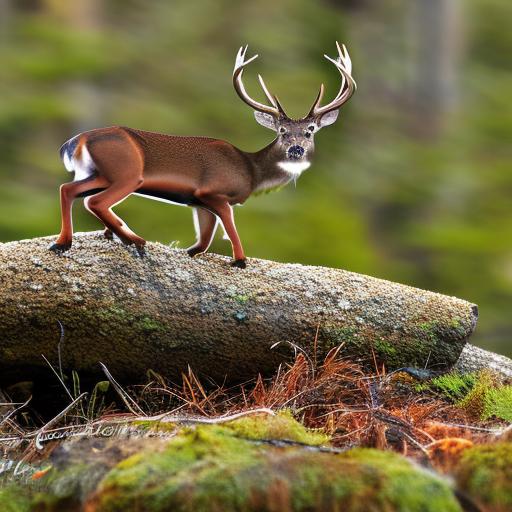
deer hunting checklist pdf

Deer hunting is a popular and challenging outdoor activity that requires the right gear and preparation for success. Whether you are a seasoned hunter or a beginner, having the essential gear and being well-prepared can make all the difference in your hunting experience. From firearms and ammunition to clothing and accessories, each piece of gear plays a crucial role in ensuring a successful hunt. In this article, we will provide a comprehensive checklist of essential gear for deer hunting, as well as offer tips on pre-hunt preparation, clothing and footwear, firearms and ammunition, optics and accessories, hunting licenses and permits, safety equipment, field dressing and processing, camping and survival gear, and packing and transport.
Key Takeaways
- Essential gear for deer hunting includes a firearm, ammunition, hunting knife, binoculars, and a backpack.
- Pre-hunt preparation involves scouting the area, checking weather conditions, and reviewing hunting regulations.
- Proper clothing and footwear are crucial for staying comfortable and concealed while hunting.
- Choosing the right firearm and ammunition is important for ethical and successful hunting.
- Optics and accessories like rangefinders and trail cameras can enhance your hunting experience.
Essential Gear for Deer Hunting: A Comprehensive Checklist
When it comes to deer hunting, having the right gear is essential for a successful hunt. Here is a comprehensive checklist of the essential gear needed:
1. Weapon: The most common weapons used for deer hunting are rifles, shotguns, and bows. Choose a weapon that you are comfortable with and that meets the legal requirements in your area.
2. Ammunition: Make sure to have enough ammunition for your weapon. It is also important to choose the right type of ammunition for deer hunting, such as hollow point or soft point bullets.
3. Hunting Accessories: There are several hunting accessories that can enhance your hunting experience, including binoculars for spotting deer from a distance, rangefinders for accurately measuring distances, and tree stands for better visibility.
4. Backpack: A good quality backpack is essential for carrying all your gear during the hunt. Look for a backpack with multiple compartments and adjustable straps for comfort.
5. Knife: A sharp knife is necessary for field dressing and processing the deer after the harvest. Choose a knife with a fixed blade for durability.
6. Game Bags: Game bags are used to transport the harvested deer. They help protect the meat from dirt and insects. Look for game bags made of breathable material.
7. Field Dressing Kit: A field dressing kit includes tools such as a gut hook, bone saw, and gloves for efficient field dressing and processing of the deer.
8. Flashlight: A reliable flashlight is essential for navigating in low-light conditions, especially during early morning or late evening hunts.
9. First Aid Kit: Accidents can happen while hunting, so it is important to have a first aid kit on hand for any minor injuries or emergencies.
10. GPS or Map: A GPS device or a map of the hunting area is crucial for navigation and ensuring you do not get lost in unfamiliar territory.
Pre-Hunt Preparation: What to Do Before You Hit the Woods
Before heading out for a deer hunt, it is important to spend time scouting and preparing the hunting area. Here are some pre-hunt preparation tips:
1. Scouting: Scouting involves visiting the hunting area before the hunt to identify deer patterns, feeding areas, and bedding areas. This will help you determine the best spots to set up your stand or blind.
2. Trail Cameras: Setting up trail cameras in strategic locations can provide valuable information about deer movement and behavior. Reviewing the footage from trail cameras can help you plan your hunt more effectively.
3. Clear Shooting Lanes: Clear any obstructions such as branches or brush that may obstruct your view or shot. This will ensure a clear line of sight when you spot a deer.
4. Practice Shooting: Spend time at the shooting range to practice your shooting skills and become familiar with your weapon. This will increase your accuracy and confidence during the hunt.
5. Study Local Regulations: Familiarize yourself with local hunting regulations, including bag limits, hunting seasons, and any specific rules or restrictions in the area you plan to hunt.
6. Plan Your Approach: Determine the best approach to your hunting area, taking into consideration wind direction, noise level, and the least disruptive route to avoid spooking deer.
Clothing and Footwear: Dressing for Success in the Field
Choosing the right clothing and footwear is crucial for a successful deer hunt. Here are some tips for dressing for success in the field:
1. Layering: Dressing in layers is important to regulate body temperature and stay comfortable throughout the hunt. Start with a moisture-wicking base layer, followed by an insulating layer, and finish with a waterproof and windproof outer layer.
2. Camouflage Clothing: Wearing camouflaged clothing helps you blend into the surroundings and makes it harder for deer to spot you. Choose camouflage patterns that match the terrain you will be hunting in.
3. Blaze Orange: While camouflaged clothing is important for blending in, it is also essential to wear blaze orange clothing to ensure your visibility to other hunters. Check local regulations for specific requirements on blaze orange clothing.
4. Insulated Boots: Invest in a good pair of insulated boots that are waterproof and provide good traction. Cold feet can be uncomfortable and distract you from focusing on the hunt.
5. Gloves and Hats: Wearing gloves and hats can help keep your extremities warm and protect against frostbite during cold weather hunts.
6. Scent Control: Deer have a keen sense of smell, so it is important to minimize human scent as much as possible. Use scent control products such as scent-free soaps, detergents, and sprays to reduce your scent signature.
Firearms and Ammunition: Choosing the Right Tools for the Job
Choosing the right firearms and ammunition is crucial for a successful deer hunt. Here are some factors to consider when selecting your tools:
1. Rifle or Shotgun: The choice between a rifle or shotgun depends on personal preference, hunting regulations, and the terrain you will be hunting in. Rifles offer greater accuracy and range, while shotguns are better suited for close-range hunting.
2. Caliber or Gauge: The caliber or gauge of your firearm determines the size and power of the ammunition. Choose a caliber or gauge that is appropriate for deer hunting and legal in your area.
3. Bullet Type: There are different types of bullets available for deer hunting, including hollow point, soft point, and ballistic tip. Each bullet type has its own advantages and is suited for different hunting situations.
4. Shot Size: If you are using a shotgun for deer hunting, choose the right shot size for the game you are pursuing. Larger shot sizes such as 00 or 000 buckshot are commonly used for deer hunting.
5. Accuracy and Range: Consider the accuracy and range of your firearm when selecting ammunition. Choose ammunition that is known for its accuracy and has sufficient range for the hunting conditions you will encounter.
6. Recoil: Recoil can affect your accuracy and comfort while shooting. Consider the recoil of your firearm and choose ammunition that balances power with manageable recoil.
Optics and Accessories: Enhancing Your Hunting Experience
Using optics and accessories can greatly enhance your hunting experience. Here are some essential items to consider:
1. Binoculars: Binoculars are essential for spotting deer from a distance and identifying their behavior. Look for binoculars with good magnification and a wide field of view.
2. Rangefinders: Rangefinders help you accurately measure distances to your target, ensuring an ethical shot. Look for rangefinders with a high level of accuracy and quick response time.
3. Tree Stands: Tree stands provide an elevated position for better visibility and concealment. Choose a tree stand that is comfortable, easy to set up, and secure.
4. Game Calls: Game calls can be used to attract deer by mimicking their vocalizations. Learn how to use game calls effectively and practice before the hunt.
5. Scent Attractants: Scent attractants can be used to lure deer to your hunting area. Choose scents that are specific to the time of year and the behavior of the deer in your area.
6. Backpacks and Gear Organizers: Having a backpack or gear organizer with multiple compartments can help keep your gear organized and easily accessible during the hunt.
Hunting Licenses and Permits: Staying Legal and Compliant
Obtaining the necessary licenses and permits is crucial for staying legal and compliant while hunting. Here are some tips to ensure you are properly licensed:
1. Research Hunting Regulations: Familiarize yourself with the hunting regulations in your area, including bag limits, hunting seasons, and any specific rules or restrictions.
2. Obtain a Hunting License: Purchase a hunting license from your state’s wildlife agency or authorized vendors. Make sure to carry your license with you at all times while hunting.
3. Apply for Tags or Permits: Depending on the species and location, you may need to apply for tags or permits to hunt deer. Check the application deadlines and requirements in your area.
4. Hunter Education Course: Many states require hunters to complete a hunter education course before obtaining a hunting license. Take the course if required, even if it is not mandatory in your state.
5. Follow Local Regulations: Always follow local regulations regarding hunting practices, including shooting hours, baiting restrictions, and firearm restrictions.
6. Report Harvested Game: If you are successful in harvesting a deer, make sure to report it as required by local regulations. This helps wildlife agencies gather data for population management.
Safety Equipment: Protecting Yourself and Others While Hunting
Using safety equipment is essential for protecting yourself and others while hunting. Here are some important safety items to consider:
1. Blaze Orange Clothing: Wearing blaze orange clothing is crucial for ensuring your visibility to other hunters. Check local regulations for specific requirements on blaze orange clothing.
2. Ear Protection: Protect your hearing by wearing ear protection, especially when using firearms. Exposure to loud noises can cause permanent hearing damage.
3. Safety Harness: If you are using a tree stand, always wear a safety harness to prevent falls. Make sure the harness is properly fitted and secured to the tree.
4. First Aid Kit: Carry a first aid kit with you at all times during the hunt. It should include basic supplies such as bandages, antiseptic wipes, and pain relievers.
5. Communication Device: Carry a communication device such as a cell phone or two-way radio to stay in contact with others in your hunting party or to call for help in case of an emergency.
6. Emergency Whistle: An emergency whistle can be used to signal for help if you become lost or injured during the hunt. Make sure to carry it with you at all times.
Field Dressing and Processing: Tips and Tools for Efficient Harvesting
Field dressing and processing deer properly is essential for efficient harvesting and preserving the quality of the meat. Here are some tips and tools to consider:
1. Gutting the Deer: Start by making an incision from the sternum to the pelvis, being careful not to puncture any organs. Remove the internal organs, including the heart, lungs, liver, and intestines.
2. Skinning the Deer: After gutting, carefully skin the deer using a sharp knife. Start from the hind legs and work your way up towards the head.
3. Quartering the Deer: If you are planning to transport the deer in quarters, use a bone saw to separate the deer into manageable pieces. This makes it easier to pack and transport.
4. Cooling the Meat: Properly cool the meat as soon as possible after field dressing. Hang the quarters in a cool, dry place or place them in a cooler with ice.
5. Processing the Meat: If you plan to process the meat yourself, invest in a meat grinder, vacuum sealer, and other processing equipment. Alternatively, you can take the deer to a professional meat processor.
6. Proper Disposal: Dispose of the carcass and entrails properly to avoid attracting predators or spreading disease. Check local regulations for specific guidelines on carcass disposal.
Camping and Survival Gear: Preparing for Extended Hunts
If you are planning an extended hunting trip, having the right camping and survival gear is crucial. Here are some essential items to consider:
1. Tent: Choose a tent that is lightweight, easy to set up, and provides adequate protection from the elements. Look for a tent with good ventilation and waterproof features.
2. Sleeping Bag: Invest in a high-quality sleeping bag that is suitable for the expected weather conditions. Look for a sleeping bag with a temperature rating that matches the expected low temperatures.
3. Cooking Equipment: Bring cooking equipment such as a camp stove, pots, pans, and utensils for preparing meals during your hunting trip. Consider lightweight and compact options for easy transport.
4. Food Supplies: Pack enough food supplies to last the duration of your hunting trip. Choose lightweight and non-perishable foods that are easy to prepare.
5. Water Filtration System: Ensure a clean water supply by bringing a water filtration system or water purification tablets. This will allow you to safely drink water from natural sources.
6. Survival Kit: Prepare a survival kit that includes essential items such as a compass, fire starter, emergency blanket, whistle, and multi-tool. This will help you in case of emergencies or unexpected situations.
Packing and Transport: Organizing Your Gear for a Successful Hunt
Properly packing and organizing your gear is essential for a successful hunt. Here are some tips to help you pack and transport your gear:
1. Backpacks: Use a backpack with multiple compartments to organize your gear. Pack heavier items closer to your back for better weight distribution.
2. Duffel Bags: Duffel bags are great for storing and transporting larger items such as clothing, sleeping bags, and camping equipment. Look for duffel bags with sturdy handles and shoulder straps.
3. Gear Organizers: Use gear organizers such as packing cubes or compression sacks to keep your gear organized and easily accessible. This will save you time and frustration when searching for specific items.
4. Waterproof Bags: Protect your gear from moisture by using waterproof bags or dry bags. This is especially important if you will be hunting in wet or rainy conditions.
5. Secure Your Weapons: Ensure that your weapons are securely stored and transported to prevent accidents or damage. Use gun cases or bow cases that provide adequate protection.
6. Checklists: Create a checklist of all the gear you need for the hunt and double-check before leaving to ensure you have everything you need. This will help prevent any last-minute surprises or forgotten items.
Having the right gear and preparation is crucial for a successful deer hunt. From essential weapons and ammunition to clothing, accessories, licenses, safety equipment, and processing tools, each piece of gear plays a crucial role in ensuring a successful hunt. By following the tips and advice provided in this article, you can increase your chances of having a successful and enjoyable deer hunting experience. Remember to always prioritize safety and follow all hunting regulations and guidelines. Additionally, it is important to practice ethical hunting practices, such as taking clean shots and respecting the animal. By being well-prepared and knowledgeable about the hunting area, deer behavior, and the gear you are using, you can maximize your chances of a successful hunt. Remember to also have patience and persistence, as deer hunting can often require waiting for long periods of time. With the right gear and preparation, you can have a rewarding and memorable deer hunting experience.
If you’re planning a deer hunting trip, it’s essential to be well-prepared. One crucial aspect is having a comprehensive checklist to ensure you have all the necessary gear and equipment. To help you with this, I recommend checking out this informative article on the “Deer Hunting Checklist PDF” by Old Oak Syndicate. It provides a detailed list of items you should consider bringing on your hunting expedition. While you’re at it, you might also find their related articles interesting, such as “The Best Time of Day to Hunt Grouse” and “What Do Quail Eat?”. These resources will undoubtedly enhance your hunting knowledge and increase your chances of a successful trip.
FAQs
What is a deer hunting checklist?
A deer hunting checklist is a list of essential items that a hunter needs to carry while going for deer hunting. It helps to ensure that the hunter has all the necessary equipment and supplies to make the hunting trip successful.
Why is a deer hunting checklist important?
A deer hunting checklist is important because it helps to ensure that the hunter has all the necessary equipment and supplies to make the hunting trip successful. It also helps to prevent the hunter from forgetting any important items that could be crucial to the hunting trip.
What items should be included in a deer hunting checklist?
A deer hunting checklist should include items such as hunting license, hunting rifle, ammunition, binoculars, hunting knife, hunting clothes, boots, gloves, hat, backpack, water bottle, first aid kit, and a map of the hunting area.
Where can I find a deer hunting checklist pdf?
A deer hunting checklist pdf can be found online on various hunting websites, forums, and blogs. It can also be downloaded from the websites of hunting gear manufacturers and retailers.
Can I customize a deer hunting checklist pdf?
Yes, a deer hunting checklist pdf can be customized according to the hunter’s specific needs and preferences. The checklist can be edited and items can be added or removed as per the hunter’s requirements.

Herb has been a longtime lover of the outdoors. Whether it be hunting, camping, fishing or just getting outside to reset. Proud father and animal lover. Bourbon anyone?

by
Tags:
Comments

Categories
- Big Game Hunting (301)
- Deer (202)
- Reviews (3)
- Shooting (16)
- Slingshot (1)
- Small Game Hunting (42)
- Upland Hunting (126)
- Waterfowl Hunting (3)

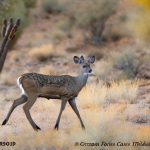
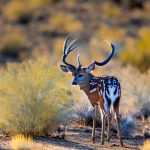
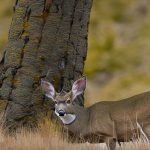
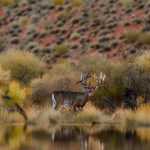
Leave a Reply